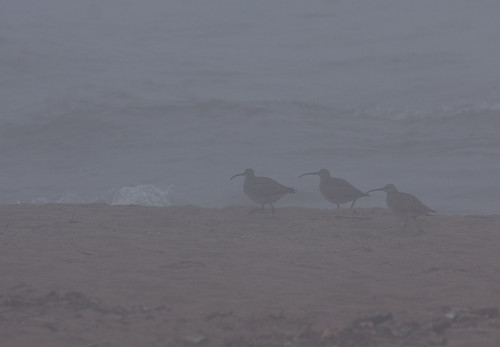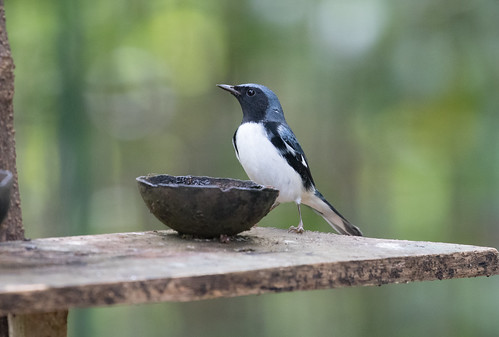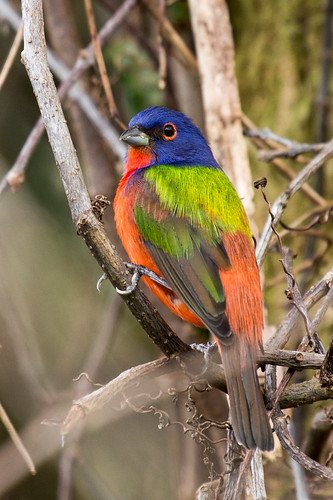 |
| I photographed this White-winged Dove in Kissimmee Lakeshore Park in Florida last month. One was hanging out in Two Harbors this week! |
Such cool birds are making me feel like I’m missing out. Rarities always show up during spring migration, but the weather is certainly contributing. I missed this year's usual yet thrilling influx of Bonaparte’s Gulls and Red-throated Loons. It’s not at all unusual to see a Whimbrel or two on the ball field or beach on Park Point, but on the 21st, a full 79 were there.
 |
| I photographed this Whimbrel on Park Point's ball field on June 14, 2011. Might one show up after I get home June 7? |
Cape May Warblers were also visiting feeders this week—I’ve had them in my own yard coming to jelly and to oranges, only during cold days in May, so I don’t see this every year.
This week a rare Summer Tanager turned up north of town. Even more exceptional, a Yellow-throated Warbler turned up in Duluth—some nest in southernmost Wisconsin and southeastern Minnesota, but that’s as far north as this Southeastern species should ever be.
The Pink-sided form of the Dark-eyed Junco, which belongs in the Rocky Mountains, showed up in northern Wisconsin Monday, and a gorgeous Audubon’s Warbler—that’s the western form of the Yellow-rumped Warbler—turned up on one of the Chequamegon Bay Birding Festival field trips Saturday.
Tuesday, the day I left, a Hooded Oriole, a bird from the extreme Southwest, turned up in Sanborn, Wisconsin. It would, of course, have been new for my Wisconsin list.
 |
| This is the only Hooded Oriole I've ever photographed, near Carlsbad Caverns in New Mexico, where they belong. |
A White-winged Dove turned up and stuck around in Two Harbors for over a week. I got several nice photos of one in Kissimmee, Florida this spring, but would never ever have expected one in Lake County, Minnesota. When I started birding, even Florida White-winged Doves would have been unheard of. They were once fairly restricted to desert thickets, specializing on saguaro cactus seeds. Now they’ve become common in cities and towns across the southern U.S., and seem to be expanding northward as well. I don’t know if they’ll compete with Mourning Doves—I hope not, because they’re shockingly colorful and lovely, so I’d just as soon welcome their natural expansion rather than worrying about what they’re doing to our long-time native birds.
My extended road trip involves three birding festivals—the one last weekend in the Indiana Dunes, and one this coming weekend in Freeport, Maine, sponsored by LL Bean and Maine Audubon.
 |
| Photo by Laurie Gilman |





